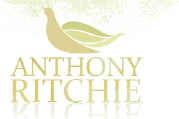

Rhapsody
for violin and piano. Anthony Ritchie Opus 83
This vivid and exciting piece is based around a 'khosid dance' from Transylvannia. Both violin and piano parts are demanding.
- YEAR: 1998
- DURATION: 8'30
- COMMISSIONED BY: Chamber Music NZ for Michael Houstoun and Wilma Smith
- LEVEL: 4 | Challenging for professional musicians
Programme Note
In 1993 a Hungarian group called Muzsikas produced a CD of folk music entitled 'The Lost Jewish Music of Transylvannia'. The recording was prompted by the discovery that Hungarian Jews before the war had their own distinct style of music, consisting of an amalgam of Jewish melodies with Hungarian performance style. Up until this time there was little known evidence of this style of music, due in large part to the holocaust. In one county, Maramaros, for instance, where 5000 families lived before World War II, there was a large Jewish orchestra and soloists. None of these musicians survived the deportation by the Nazis.
The only older players who could be found during Muzsikas' research were two gypsies: a violinist and cimbalom player, both of whom had played for Jews before and after the war. In addition to this, a pupil of the composer Kodaly, Zoltan Simon, had made a collection of Jewish melodies. Drawing on these two sources, Muzsikas reconstructed the Hungarian-Jewish style that had been silenced for so long. The CD is a moving tribute to the power of music to survive the ravages of history, and to the people who created it.
Inspired by this recording, I decided to adopt one of the Jewish melodies in my Rhapsody. The melody is a 'Khosid Dance' (a popular dance at Jewish weddings) and appears in the second half of the piece, played on the violin while the piano accompanies with a cimbalom-like figure. The melody becomes the subject of variations and is also mixed with fragments of earlier themes. The use of folk melody in a piece such as this has precedent in Bartok Rhapsodies for violin and piano which date from the 1920s.
The Rhapsody begins quietly and mysteriously with a melody in the top of the piano register, which is taken over by the violin. The violin descends into the lower register and the piano plays a theme which refers to J.S. Bach's famous chorale O Haupt voll Blut und Wunden (O Head, bleeding and wounded) from St. Matthew's Passion. The music accelerates into the allegro section and a new theme is presented, which is restless and agitated in mood. In contrast with this the piano plays a spiky and macabre theme, accompanied by pizzicato on the violin. Both themes contain short motifs which are developed during the rest of the piece, and placed in counterpoint with the 'Khosid Dance' when it appears. The vitality of the allegro becomes exhausted and the music gradually fades rather than ending.
Rhapsody was commissioned by Chamber Music New Zealand, and written for violinist, Wilma Smith and pianist, Michael Houstoun.
Rhapsody has been published by Promethean Editions and can be purchased by clicking on the link.